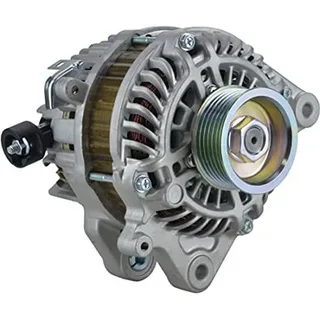Imagine walking into your home and feeling an immediate sense of freshness, as if you’ve stepped into a sunlit meadow rather than a stuffy room. This blissful sensation isn’t just about aesthetics; it’s deeply tied to something often overlooked—house ventilation. In our quest for cozy living spaces, we tend to seal ourselves away from the outside world, trapping pollutants and moisture inside. But what if we told you that proper ventilation could not only enhance your indoor air quality but also boost your overall well-being? Join us as we explore why adequate house ventilation is essential for a healthy home environment, ensuring that every breath you take feels revitalizing and pure!
Why is Proper Ventilation Important?
Proper ventilation is essential for maintaining a healthy indoor environment. It allows fresh air to circulate throughout your home, reducing the buildup of harmful pollutants.
Without adequate airflow, stale air can linger, leading to discomfort and potential health risks. Poor ventilation traps moisture, creating a breeding ground for mould and mildew. Moreover, good ventilation helps regulate temperature. During hot summers or chilly winters, your living space remains comfortable without relying too heavily on heating or cooling systems.
Additionally, adequate ventilation enhances overall energy efficiency in the home. By balancing indoor humidity levels and improving air quality, you may also notice fewer allergy flare-ups or respiratory issues among family members. Understanding this importance highlights why homeowners seeking comfort and well-being should prioritise investing in proper house ventilation.
Types of Ventilation Systems
Understanding the types of house ventilation available can help you make informed choices. Natural ventilation relies on passive airflow through windows and vents. It harnesses wind and thermal buoyancy to circulate fresh air without mechanical systems.
Mechanical ventilation systems enhance this process. Exhaust fans remove stale air from kitchens and bathrooms, while supply fans bring fresh outdoor air. Balanced systems utilize both methods for optimal airflow.
Energy recovery ventilators (ERVs) improve efficiency by exchanging heat and moisture between incoming and outgoing air. This technology helps maintain indoor comfort year-round. Finally, ductless mini-split systems offer targeted ventilation solutions for specific rooms or areas of your home. These versatile units provide heating, cooling, and improved airflow wherever needed, making them an excellent choice for many homeowners.
Signs of Poor House Ventilation
Recognizing the signs of poor house ventilation is crucial for maintaining a healthy living environment. One standard indicator is persistent humidity. If your walls feel damp or you notice condensation on windows, airflow may be restricted.
Another telltale sign is the presence of unpleasant odours. Musty smells often signal trapped air and stagnant moisture, which can lead to mould growth. Frequent temperature fluctuations in different rooms also suggest inadequate ventilation. If some areas feel stuffy while others are chilly, it’s time to investigate your airflow.
Finally, look out for increased allergy symptoms among residents. Dust mites and allergens thrive in poorly ventilated spaces, making breathing uncomfortable for many individuals. Keep an eye on these signs to ensure your home remains a haven of fresh air and comfort.
Common Issues Caused by Poor Ventilation
Poor ventilation can lead to various issues that compromise your home and your health. One common problem is the buildup of indoor air pollutants, such as dust, mould spores, and volatile organic compounds (VOCs). These contaminants can trigger allergies and respiratory problems.
Excess moisture is another concern. When air circulation isn’t adequate, humidity levels rise. This creates an ideal environment for mould growth, which damages walls and ceilings and poses serious health risks.
You might also notice unpleasant odours lingering in stagnant areas. A lack of proper airflow traps smells from cooking or pets inside your home. Energy efficiency suffers, too. Poor ventilation forces heating and cooling systems to work harder than necessary, leading to higher utility bills. Understanding these issues emphasizes the need for adequate ventilation solutions in every household.
Tips for Improving House Ventilation
Proper house ventilation is crucial for maintaining a healthy and comfortable living environment. It helps circulate fresh air and plays a key role in preventing moisture buildup, reducing indoor pollutants, and regulating temperature. In this section, we will discuss some tips for improving house ventilation to ensure that you and your family can breathe easily.
1. Regularly Clean Your Air Vents
The first step in improving house ventilation is to ensure that your air vents are clean and free from obstructions. Dust, dirt, and debris can accumulate in the vents over time, hindering airflow and reducing the effectiveness of your HVAC system. It is essential to clean or replace your air filters regularly, every 1-3 months, depending on usage—additionally, vacuum or dust off any visible buildup around the vents.
2. Install Exhaust Fans
Exhaust fans are an excellent way to improve ventilation in specific areas of your home, such as bathrooms, kitchens, and laundry rooms. They help remove excess moisture from these high-humidity spaces before it has a chance to cause mold growth or other water-related issues. Ensure exhaust fans are correctly installed by a professional and run them while using these spaces.
3. Utilize Natural Ventilation Methods
Opening windows and doors when weather permits is another simple yet effective way to improve house ventilation naturally. This allows fresh air circulation throughout your home while flushing out any stagnant or polluted indoor air.
4. Consider Mechanical Ventilation Systems
In addition to natural ventilation methods, mechanical systems like whole-house fans or heat recovery ventilators (HRVs) can significantly improve overall indoor air quality by continuously exchanging stale indoor air with fresh outdoor air.
5. Keep Indoor Plants
Plants add aesthetic appeal to our homes and act as natural air purifiers by absorbing carbon dioxide while releasing oxygen into the atmosphere through photosynthesis.
Proper house ventilation is essential for maintaining a healthy and comfortable living space. By following these tips, you can improve your home’s air quality, reduce the risk of respiratory issues, and ensure that you and your family can breathe easilyeasily.
The Role of Air Filters in Maintaining Good Ventilation
Air filters play a crucial role in maintaining good ventilation in your home. They trap dust, pollen, pet dander, and other airborne particles, helping ensure that the air circulating through your living space is clean and fresh.
Choosing the right filter can make a significant difference. High-efficiency particulate air (HEPA) filters are designed to capture smaller particles, improving overall air quality. Regularly changing or cleaning these filters keeps them effective.
Clogged or dirty air filters can restrict airflow, leading to poor ventilation. A simple check of your filters every few months can prevent this issue and optimize performance.
By investing in quality air filters and staying on top of maintenance tasks, you enhance ventilation and create a healthier indoor environment for you and your family. Good airflow and filtered air contribute to easier breathing and greater comfort throughout your home.
Benefits of Having Good House Ventilation
Good house ventilation is essential for maintaining a healthy indoor environment. It helps to regulate temperature and humidity levels, ensuring comfort year-round.
Proper airflow significantly reduces the presence of allergens and pollutants. This contributes to better air quality, reducing respiratory issues for you and your family. Ventilation also plays a vital role in preventing moisture buildup. Excess humidity can cause mould growth, which poses health risks and damages your home’s structure.
Adequate ventilation improves energy efficiency. A well-ventilated space requires less heating or cooling, leading to lower utility bills. Additionally, good airflow enhances odors’ dissipation. Say goodbye to lingering smells from cooking or pets while enjoying fresher air throughout your home! Investing in proper ventilation protects your property and promotes overall well-being for everyone who lives there.
Conclusion
Breathing easily is essential for our overall health and well-being. Proper house ventilation plays a crucial role in achieving that goal. When your home has adequate airflow, it helps to eliminate indoor pollutants and moisture, creating a comfortable living environment. Good ventilation not only improves air quality but also enhances energy efficiency. A well-ventilated space can help regulate temperature, reducing the need for excessive heating or cooling. This can lead to lower energy bills and a reduced carbon footprint.
FAQs
Q: What exactly is house ventilation?
A: House ventilation refers to maintaining a continuous flow of fresh air in and out of your home. This helps to remove stale or polluted indoor air and replace it with clean, fresh outdoor air.
Q: Why is proper house ventilation important?
A: Proper house ventilation is important for several reasons. First, it ensures that the indoor air quality remains healthy by removing pollutants such as dust, allergens, and chemicals from household products. Second, it helps to control moisture levels in the home, which can lead to mould growth and other health hazards. Proper ventilation also helps to regulate temperature and reduce energy costs.
Q: How often should I ventilate my home?
A: The frequency of house ventilation depends on various factors such as weather conditions, occupancy level, and activities inside the home. Generally, it is recommended to ventilate your home at least once daily for 10-15 minutes by opening windows or using exhaust fans.
| Related Business Listings |
| Contact Directory |
| Local Business Profiles |



